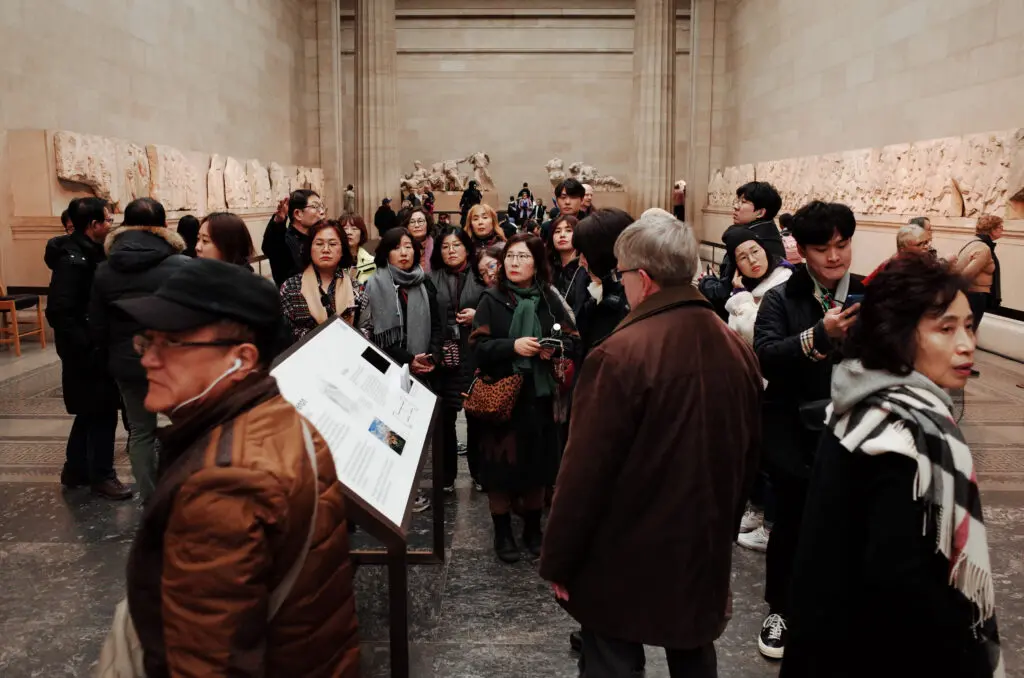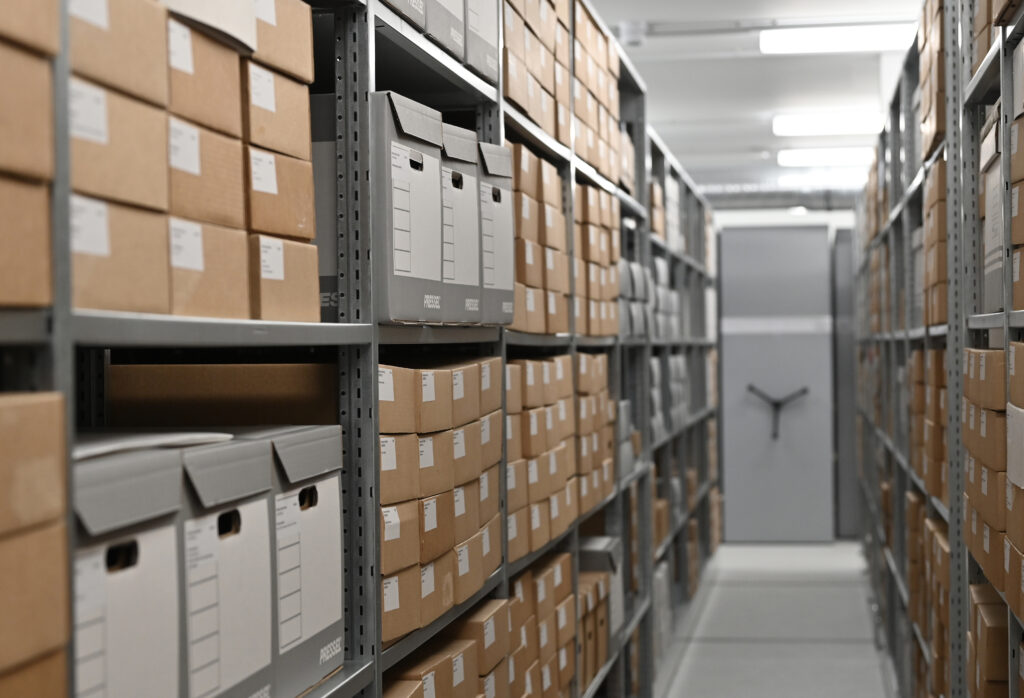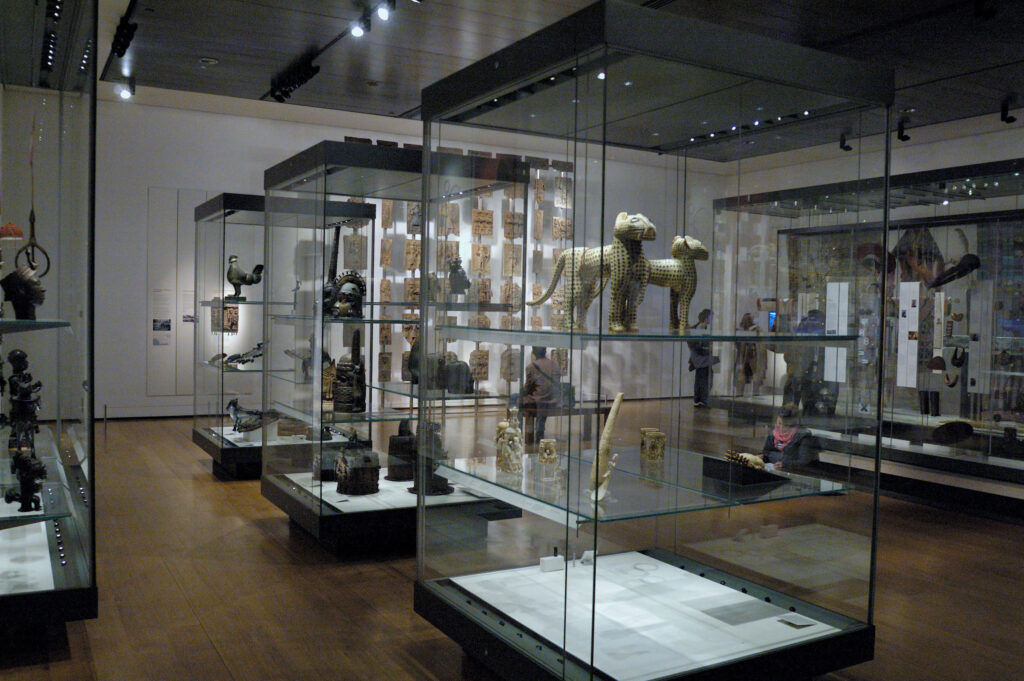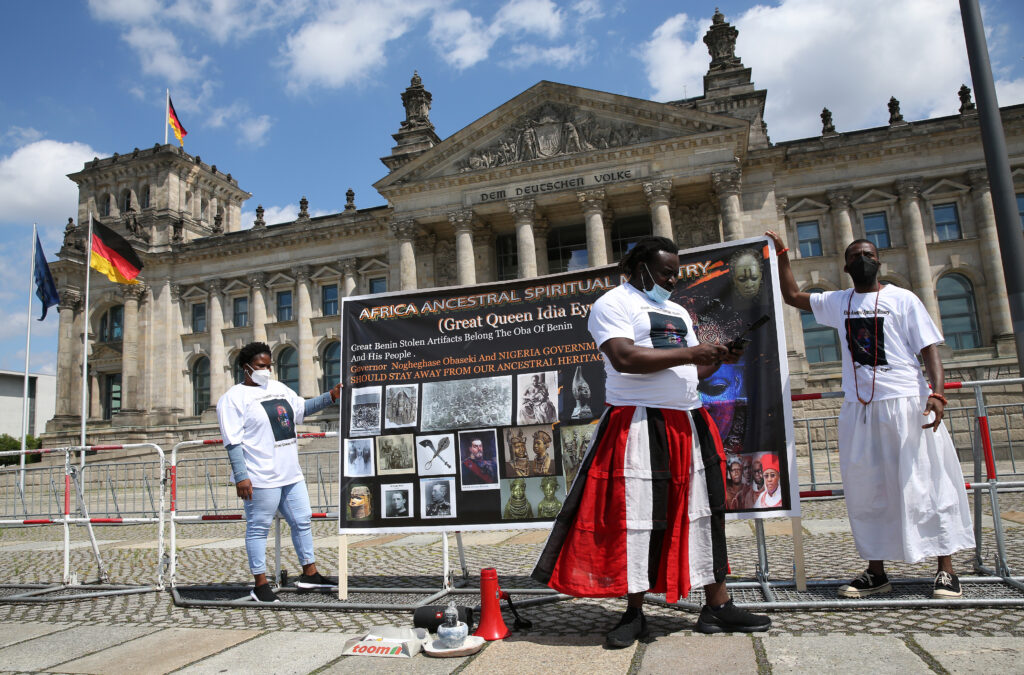How Museum Items Go Missing

A CURATOR ACCUSED
In August 2023, news broke that a senior curator allegedly stole and sold nearly 2,000 objects from the British Museum over the course of several decades. The items included gold rings, bracelets, necklaces, and earrings, mainly from ancient Greece and Rome.
The irony here is palpable: An institution infamous for displaying looted colonial artifacts had objects stolen by a staff member.
One of the principal justifications museums often give for denying the restitution and repatriation of cultural objects is the purported need to safeguard the material within the institutions. The recent thefts contradict this argument and have strengthened claims from advocates representing countries such as Greece and Nigeria for the rightful return of their cultural heritage.
I was the only Black curator at the British Museum during my nearly three years there as project curator of archaeological assemblages. My tenure coincided with the historic Black Lives Matter protests of 2020, and I joined the museum’s Equality and Diversity Steering Committee, working with colleagues to change the institution from within.
Now I hope to enable change from the outside by sharing insights I gained about the museum’s collecting and curating practices. For museums and the public to have meaningful discussions about the future of the collections, it is critical to understand the institution’s opaque and outdated practices, which can lead to such thefts.
HOW OBJECTS ENTER MUSEUMS
The British Museum displays some 80,000 objects in its public galleries. But what’s showcased represents only a small fraction—1 percent—of the museum’s collection, which comprises a staggering 8 million objects. The remaining items are stored behind the scenes at the museum and two dedicated warehouses. In these climate-controlled facilities, staff work to catalog, conserve, and curate objects. The spaces are dynamic centers of research and learning.
The breadth of objects has grown significantly since the British Museum’s foundational collection was established in 1753. Substantial additions, such as the Benin Bronzes—plaques and sculptures looted by British forces in 1897 from the royal palace of the Kingdom of Benin—stem from conflict and imperial expansion. But most items find their way into the museum through other avenues.
Many objects come from archaeological excavations, which British Museum scholars have participated in locally and internationally since the 19th century. Today researchers would need export licenses and government permissions to take material from a host country. But in the past, European and U.S. archaeologists often helped themselves to finds and divided them among the world’s leading museums.
The British Museum also acquires archaeological items through the Portable Antiquities Scheme—a platform for recording objects discovered in England and Wales by members of the public. While the scheme focuses on documentation, it also provides museums with a legal framework to purchase finds. Under the Treasure Act 1996, the British Museum has obtained objects such the Ringlemere Cup, an Early Bronze Age vessel made from a single sheet of gold, dating to nearly 4,000 years ago.
Items can also be purchased from auction houses, but it can be difficult to prove historical acquisitions were obtained and passed on ethically. Many such objects lack adequate paper trails of ownership—or any documentation whatsoever. This is the case for many of the collection’s Almoravid dinars, gold coins minted during the 11th century in Northwest Africa and Spain, which have been the focus of my most recent research.
One of the biggest challenges for museum staff comes from donations and bequests—items private collectors amass and give to the museum. Like materials from auction houses, it can be difficult to establish how donors assembled their collections in the first place.
Moreover, donations and bequests can cause an unexpected deluge of thousands of objects that need detailed cataloging, conservation care, and special storage solutions. The staff and resources to meet those needs are scarce and often allocated to other time-sensitive projects. To make matters trickier, in the British Museum, departments have split and merged several times over the centuries, shifting responsibilities over collection care in the process.
As a result, objects often remain in uncataloged limbo for decades.
HOW MISSING OBJECTS GO UNNOTICED
When a new collection arrives, staff members inventory the number of boxes, primarily to gauge storage requirements. Eventually, they need to conduct an in-depth audit detailing the exact contents of every box. This can include taking measurements, weights, photographs, and assessments of condition. The audit team makes conservation recommendations and inputs the information into a database. In a process known as accessioning, the objects are then given unique catalog numbers and legally accepted into the collection.
This meticulous operation demands considerable time and resources, luxuries museum staff often lack. Economic downturns lead to budget cuts, impacting employee retention and work continuity. Projects may be deprioritized, abandoned, and even forgotten. Without explicit documentation in a museum’s historical records or up-to-date digital databases, there’s no accountability for any given object: It’s as if it doesn’t exist.
Individuals with access and clearance could remove objects undetected.
OBSTACLES TO REPATRIATION
Under these circumstances, why don’t museums repatriate more?
For the British Museum to repatriate material, it must undertake exhaustive provenance research, determine its legal ownership, deaccession the objects from its official catalog, and relinquish legal stewardship over them.
However, once an object has been accessioned, it can only be deaccessioned under extremely restricted scenarios stipulated by the British Museum Act of 1963. According to this law, the museum can release objects that are “duplicates,” “unfit to be retained,” or “useless for the purposes of the museum” due to damage. Such items may be sold, exchanged, given away, or destroyed.
In 2005, the trustees of the British Museum sought legal clarification over the potential return on moral grounds of artwork looted during the Nazi era. The courts ruled against return, citing that the trustees are bound by Parliamentary law. But, four years later, Parliament passed the Holocaust (Return of Cultural Objects) Act 2009, which granted the trustees of various museums across much of the U.K., including the British Museum, the power to deaccession objects stolen during the Nazi era.
The act has not yet resulted in the restitution of any relevant objects from the British Museum. But it demonstrates a growing recognition of the moral obligation to address past injustices.
In 2010, a bill presented to the House of Commons by a member of Parliament proposed an amendment to the 1963 Act, which would enable the British Museum to transfer objects to other museums. The bill did not progress beyond this initial stage. Yet it highlights an underexplored avenue to enact change. So far, activist groups have focused on urging museums to reassess long-standing repatriation policies. A pivotal next step is to direct advocacy at lawmakers who could enact such changes.
With an understanding of museums’ legal constraints and inner workings, outsiders can help transform the institutions. The British Museum and others are at a crossroads, with their relevance and reputations at stake. Now is the time for museums to collaborate with the public to co-create an ethical future.
































